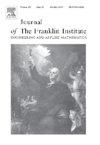Memory-based event-triggered synchronization of dynamic memristor delayed cellular neural networks for image encryption
IF 3.7
3区 计算机科学
Q2 AUTOMATION & CONTROL SYSTEMS
Journal of The Franklin Institute-engineering and Applied Mathematics
Pub Date : 2025-02-01
DOI:10.1016/j.jfranklin.2025.107552
引用次数: 0
Abstract
This paper focuses on synchronization issue of dynamic memristor-delayed cellular neural networks (DM-DCNNs) for the first time. Different from the traditional memristor-based NNs (MNNs) that are modeled by discontinuous switched systems, DM-DCNNs where the memristor has flux-controlled and continuous-time nonlinear relation have been paid widespread attention. In order to reduce network burden, a novel memory-based event-triggered mechanism (METM) is proposed to synchronize drive–response systems of DM-DCNNs. With the help of some inequality techniques and Lyapunov stability theory, the sufficient conditions for synchronization are given by some linear matrix inequalities (LMIs). Unlike previous researches, all synchronization results were conducted in the flux-charge domain, which may be a potential advantage for information processing. Then, a numerical example is employed for supporting correctness of these synchronization criteria. Furthermore, the synchronization of DM-DCNNs under METM is further designed as a new type of encryption and decryption algorithms for image protection. Finally, the experimental performances are also provided to verify the high security of designed algorithm with anti-attack capability.
求助全文
约1分钟内获得全文
求助全文
来源期刊
CiteScore
7.30
自引率
14.60%
发文量
586
审稿时长
6.9 months
期刊介绍:
The Journal of The Franklin Institute has an established reputation for publishing high-quality papers in the field of engineering and applied mathematics. Its current focus is on control systems, complex networks and dynamic systems, signal processing and communications and their applications. All submitted papers are peer-reviewed. The Journal will publish original research papers and research review papers of substance. Papers and special focus issues are judged upon possible lasting value, which has been and continues to be the strength of the Journal of The Franklin Institute.

 求助内容:
求助内容: 应助结果提醒方式:
应助结果提醒方式:


